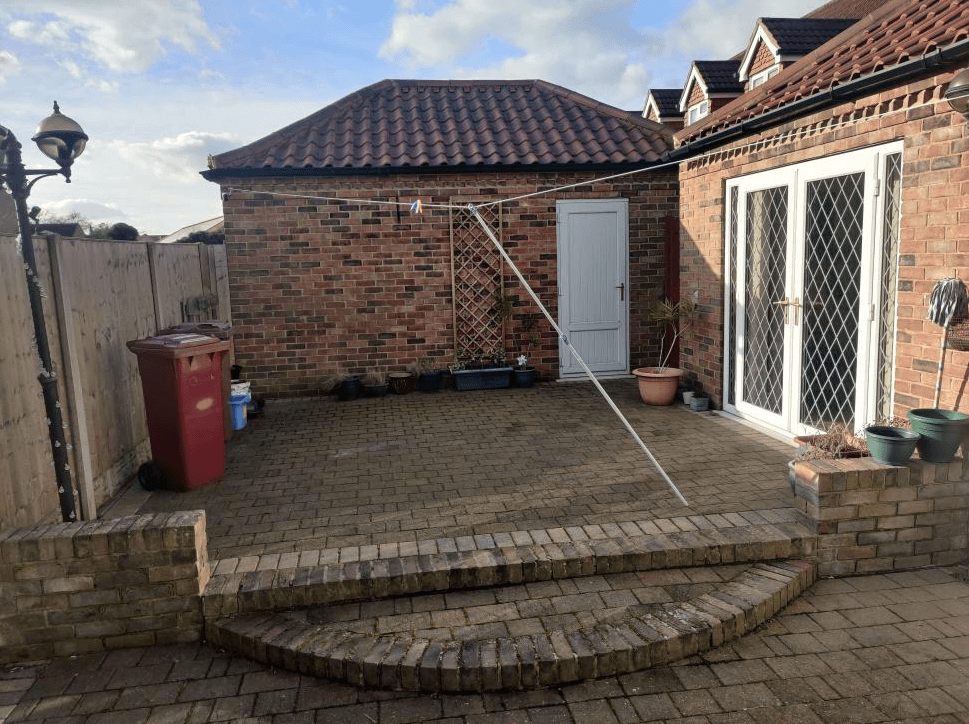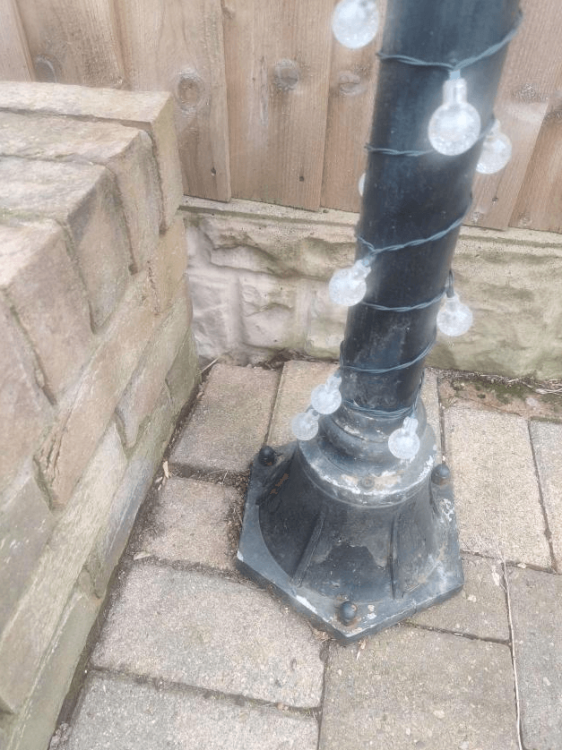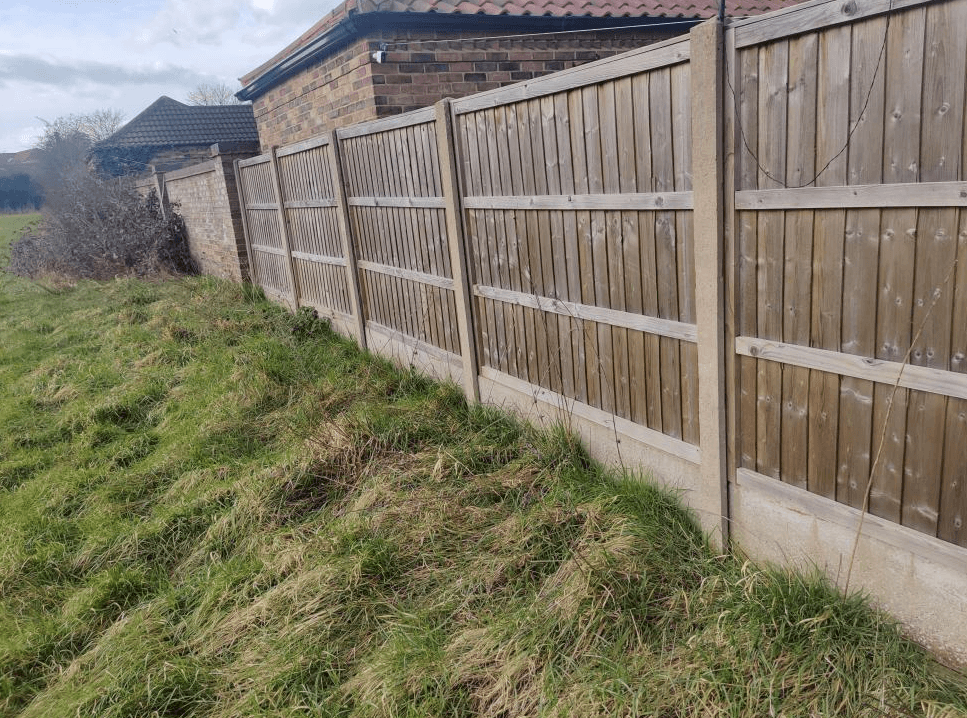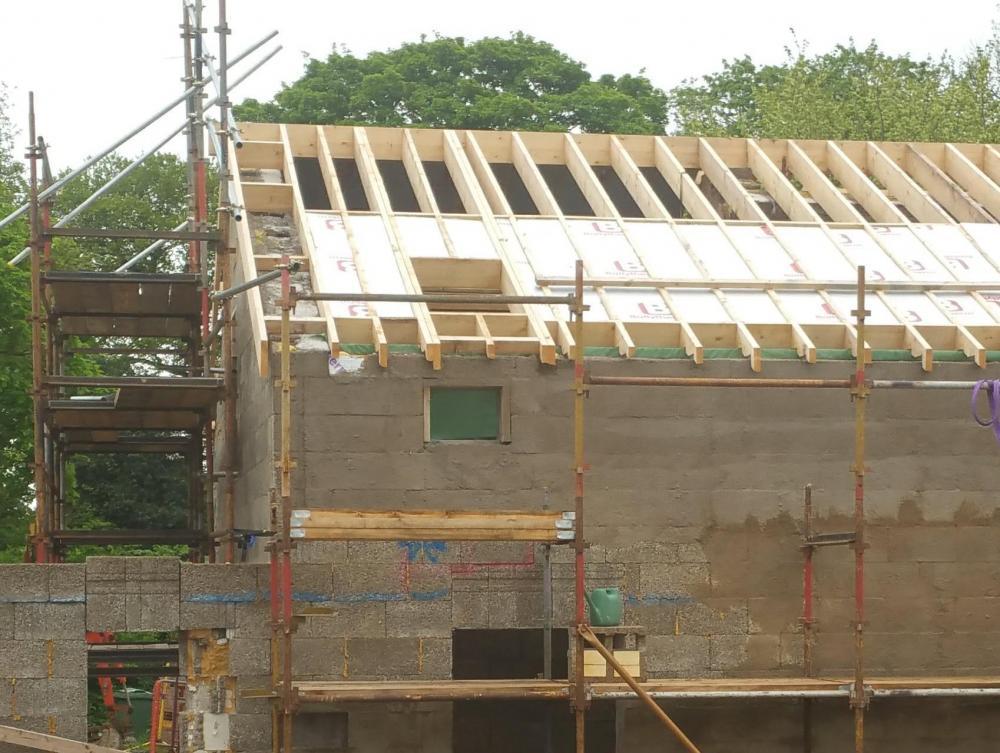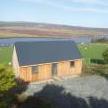Search the Community
Showing results for tags 'rafters'.
-
Hello folks. I'm converting an old brick garage into an office. Currently I'm levelling up the brick courses, as the old (rotten) roof achieved its slope via the bricks. These slopes weren't very pretty though and I'd been informed that the correct (modern) way to achieve this slope would be through the use of firrings. Mulling it over I've been wondering if I shouldn't just cut the angle I need into the upper side of each of the rafters though, being oversized at 195mm (I couldn't source 170s at the time, that could be delivered to my area), I wondered if I could sacrifice some of that extra depth, that I don't really need, to achieve the slope instead. Just wanted to know if I might be missing something, like bowing/sag, and that it's actually a bad idea? Thanks in advance.
-
Hello everyone, I'm new to the forum! After a few summers of not getting around to it, I am determined to get a lean-to-pergola erected this year. My procrastination has mainly been down to a few issues I need to be sure of before commencing. Please refer to attached images. I want the pergola to cover the entire area of the raised patio which is 5m x 5m with a height of 2.3m to the centre of the decorative brick course. My idea is for the ledger board to be attached to the garage. I will then have 4 supporting posts (6"x6"?) sat behind the low wall. My 1st doubt is how to secure the posts and would like advice please. Posts 1 & 2 have a drain pipe underneath the patio so digging isn't an option. Post 1 can be secured to the bungalow wall IMO. Posts 3 & 4 could be dug and secured with concrete(?). Post 4 I have concerns as it is right in the corner of the raised patio area and I would suspect that digging will result in the collapse of the immediate earth? (image) Could Post 2 & 3 be secured with a kind of 'above deck' post bracket? I would suggest a bracket for Post 4 too, but as you can see the paving bricks already seem to be falling away so I have concerns about solid foundations for Post 4 if I went for a bracket. These 4 posts would support the main beam (2"x8"?) which has a total length of 5m! The gap between posts 1 & 2 and 3 & 4 would be 1m leaving a span of 3m between 2 & 3. There would also be a number of cross rafters from the ledger board to the main beam, which raises more doubts... 1) The main beam: a 5m length of 2x8 will be quite weighty I imagine. Will I need 1 beam or 2 (1 at either side of posts) 2) the 5m rafters will have no support along their span, is this unadvised? i guess the rafters aren't as thick/heavy as the main beam(s) but still, 5m might be a bit of an ask. -The light post would obv be removed - the existing electric supply would be kept to supply lighting to the pergola. - the low wall would be rebuilt to extend to hide posts. I would appreciate any advice to help with the build. 🙏
-
Hi all, I am currently constructing a 30° pitched garage roof (this can be seen over on the garage build). Pretty simple design, 4 trusses, purlins and rafters over the purlins, 11mm OSB over the rafters, I have started sheeting it from the ridge down to within a half sheet of the bottom of the rafters where I will hold of until I confirm the next bits and pieces such as how big I want the overhang etc. So my next stages include boxing out the lookouts for the gable end overhangs, fit fascia boards etc. cut the rafters with a straight face to my required length to get the overhang I want etc. and obviously finish sheeting it up. So here are my questions: 1. Does the roofing sheet come down and over the top of the fascia board, with the roofing membrane running down over this joint and into the gutter, the tile then overhangs over the lot of it? 2. I was going to use a eaves guard, so following on from above, it must sot over the fascia board as it drips into the gutter - should I use these or is it not needed? 3. I note on images and roof I have seen being installed locally often a rooming batten is mounted at the very bottom of the rafter which the last tile sits on, is this correct and if so what about the increased gap it creates at the bottom - is this not a possible wind blown water issue? 4. On the gable ends I have a 200mm overhang, I have not sheeted right to the edge yet as the way it has been laid out in full sheets my cut sheets will go on last, do I take these up to the edge of the rafter or do I overlap the thickness of the barge boards? 5. Does the roofing membrane return down over the barge boards and assuming I use a painted wood or PVC barge board would I simply allow the membrane to come down the face of the board slightly then it will be dressed with a dry verge, so any water that gets under the tile will run down the roof or over to the end, down onto the barge board (behind the dry verge) and down causing no damage? Now lastly I need to order all my roofing materials, roofing is probably the one trade that I have never had to do, so although it is not rocket science I appreciate there are a lot of roofing supplies out there, from vented ridge systems and all sorts, I understand it is fairly simple and from the limited details available online I have pieced it all together but I just want to check my shopping list and not end up with incorrect things or things I don't need etc. On my list so far I need to order battens (I will use vertical and horizontal), tiles, ridge tiles a dry verge system and either wood to paint for my fascias and soffits or PVC stuff, I thought eaves protectors too. Is there anything else I should be considering? Does anyone else have a garage roof shopping list they could share with me? Last of all, does anyone have decent images of their roofing construction, I am looking for photos showing the rafter ends, gable ends and how these details are all formed up. Thanks
-
Either side of the Velux in our roof, is a doubled rafter. Have a look: There's a slight gap between them, one or two mm: not much, but enough to make me think that something needs to be done. One rafter has a slight twist in it.... Foam? Bolt? Screw? Ignore? Foam and bolt? Get a life?
- 14 replies
-
- rafters
- insulation
-
(and 1 more)
Tagged with:
-
Our rafters are 225 mm by 47mm. The insulation specified is 200 mm of Kingspan K7 between the rafters (underlayed by 82.5 mm of K18 ) Hence the 25 mm issue. And the 82.5 mm issue I suspect. Architects are like that aren't they? I have 225mm of rafter to fill: should I leave an air gap? (I bet the answer is No) should I fill the gap : 100, 100, 25 and then underlay it all with 60 mm K18 (not 82.5 mm as above) Or do something more intelligent? Which is where you come in.
- 11 replies
-
I want to tie my rafters down onto the frame using twist straps (already purchased). There are three places that I can put them: - on the inside of the frame, running down the studs. They would then have a sheet of 50mm PIR placed over them, followed by the VCL and then battens which create the service void. So the batten fixings would hit the metal straps and prevent them from being adequately fixed through to the studs. - on the outside of the frame, fixed through the sheathing and onto the studs, either above or below the breather membrane. The first layer of battens then need to be fixed over the top, so again I have the issue of fixings clashing with the metal strap- although at least this time I'm not also working blind through 50mm of PIR. - on the outside of the frame, but on top of the battens. This minimises the clashing of fixings and metalwork (although the counterbattens will need to be able to run over the top)- but is presumably the least strong out of all the options, and would need longer fixings to reach through te batten, sheathing, and into the stud. Any thoughts would be much appreciated!

